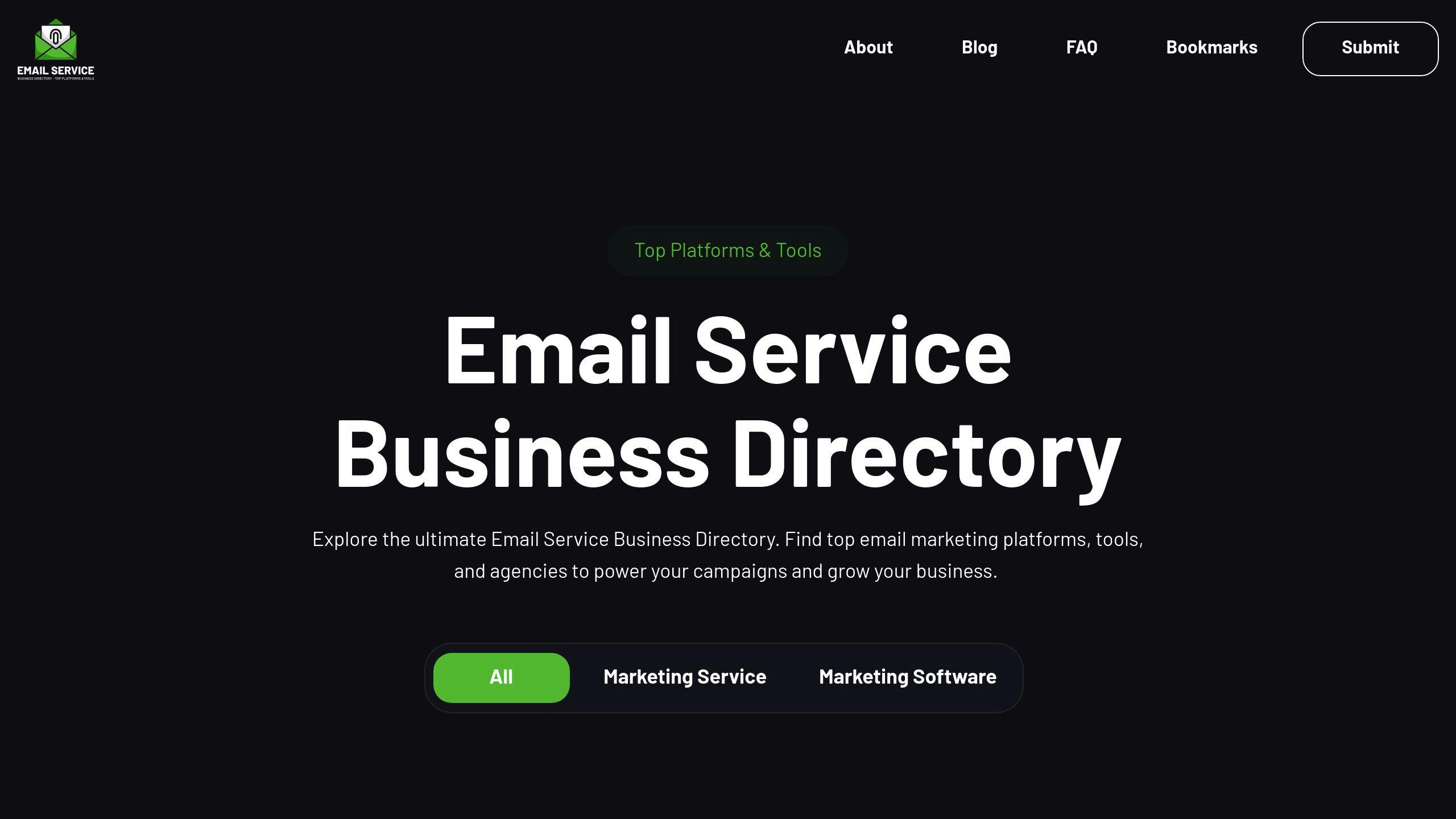Email platforms are no longer just for sending messages - they now help teams work better together. By centralizing communication, automating repetitive tasks, and integrating with tools like CRMs and project management software, they make cross-department collaboration faster and easier.
Key Benefits:
- Shared Inboxes: Everyone stays on the same page with a unified view of emails, reducing internal email volume by up to 35%.
- Automation: Features like smart routing and task creation save time and cut response times by 40%.
- Tool Integrations: Connect email with CRMs and project management tools to reduce delays and improve task completion rates by 25%.
With employees spending 28% of their workweek on email, modern platforms help save time, boost productivity, and improve communication across teams. Keep reading to learn how to set up these tools and maximize their benefits.
Shared Inbox and Email Collaboration Tool for Businesses
Features of Email Platforms That Help Teams Work Together
Modern email platforms make it easier for teams to collaborate by simplifying communication, automating repetitive tasks, and connecting with other tools. These features help teams work more efficiently and reduce delays.
Tools for Centralized Communication
Shared inboxes are a key feature for keeping communication organized. Instead of juggling scattered email threads, teams can manage all interactions in one place. This creates a clear, shared view of ongoing conversations.
For example, HubSpot's shared inbox led to a 35% drop in internal email volume and a 28% improvement in response times during Q1 2024. Features like threaded conversations, @mentions, and real-time collaboration played a big role in these improvements.
While shared inboxes improve clarity, automation tools take things a step further by cutting down on repetitive tasks.
Automation Tools and Workflow Triggers
Automation features in email platforms save time by handling routine tasks. Many teams have seen productivity gains by using these tools:
| Automation Type | Primary Function | Impact on Workflow |
|---|---|---|
| Smart Routing | Sends emails to the right department | Cuts response time by 40% |
| Task Creation | Turns emails into actionable tasks | Reduces manual task entry by 65% |
| Follow-up Reminders | Automates follow-up scheduling | Boosts task completion rates by 30% |
"Manual coordination that once took hours now happens seamlessly." - Chief Technology Officer at Collaboration Insights, 2023
But automation isn’t the only way to improve workflows. Integrating email platforms with other tools can further streamline teamwork.
Connecting with Other Tools
Modern email platforms work well with tools like CRM systems, project management software, and document-sharing apps. These integrations allow teams to access shared data, cutting down on miscommunication and delays.
For instance, Asana's email integration helped teams reduce task management time by 40% and increase project completion rates by 25%. It lets users create tasks directly from emails, simplifying workflows.
Integrations are especially useful when multiple departments are involved. Imagine a customer email requesting a product update: the email can automatically route to support, generate a ticket for the development team, and alert product managers - all while keeping a clear communication trail. These features ensure everyone stays on the same page.
How to Set Up an Email Platform for Team Workflows
Setting up an email platform takes careful planning to meet your team's specific needs.
Choosing the Right Email Platform
Pick a platform that works well with tools your team already uses. This helps streamline tasks and minimizes the need to switch between different systems. Look for platforms with strong integration options, flexible customization, and solid security measures.
| Key Selection Criteria | Why It Matters | Impact on Workflow |
|---|---|---|
| Integration Capabilities | Works with existing tools | Cuts down context switching by 45% |
| Customization Options | Adapts to team needs | Boosts adoption rates by 60% |
| Security Features | Safeguards sensitive data | Helps maintain compliance |
| Analytics Tools | Tracks performance | Supports data-driven decisions |
Creating Shared Workflows
Standardized workflows help teams communicate and collaborate more effectively across departments.
Steps to build efficient workflows:
- Review current workflows to identify areas for improvement.
- Create templates and automate repetitive tasks to ensure consistency.
Assigning Roles and Permissions
Assigning roles and permissions based on responsibilities keeps data secure and operations smooth. Role-based access control (RBAC) can reduce permission-related issues by 30% and improve collaboration across departments by 25%.
"Implementing clear role hierarchies and permission structures reduced our internal support tickets by 40% and significantly improved team productivity."
Here’s how roles can be structured:
| Role Level | Access Type | Typical Responsibilities |
|---|---|---|
| Admin | Full system access | Configures the platform, manages users |
| Team Lead | Department-level access | Oversees workflows, manages team tasks |
| Standard User | Task-specific access | Handles daily tasks and collaborates with others |
sbb-itb-6e7333f
Tips for Better Collaboration Between Teams
Using Standard Email Templates
Using standardized email templates can save 30% of email creation time and increase response rates by 25%. A centralized library for templates - covering project updates, resource requests, and feedback loops - helps maintain consistency and saves time across teams.
| Template Type | Purpose | Key Elements |
|---|---|---|
| Project Updates | Status reporting | Progress metrics, blockers, next steps |
| Resource Requests | Cross-team support | Timeline, requirements, priority level |
| Feedback Loops | Reviews and approvals | Clear deadlines, specific feedback areas |
Setting Up Real-Time Feedback
Real-time feedback tools, such as Slack's email integrations, can reduce project timelines by 28% and cut down miscommunications by 40%. Features like in-line comments, status indicators, and automated notifications for urgent feedback make cross-department collaboration smoother.
"Standardized communication processes, especially through email platforms, can significantly reduce misunderstandings and improve cross-functional collaboration." - Dr. Ethan Bernstein, Harvard Business School [1]
Regularly Reviewing Workflows
Monthly workflow reviews have proven effective in improving collaboration. For example, HubSpot reported a 15% year-over-year increase in email efficiency by analyzing workflows. Focus on metrics like response times, template adoption, and engagement levels to identify and fix bottlenecks.
| Metric | Target | Impact |
|---|---|---|
| Response Time | < 4 hours | Faster decision-making |
| Template Usage | > 80% | Consistent communication |
| Cross-dept Engagement | Daily interactions | Improved collaboration |
Use platform data and feedback from various teams to pinpoint and address communication gaps. Applying these strategies can optimize email platforms, streamline workflows, and deliver measurable improvements in team collaboration.
Why Email Platforms Help Teams Work Better
Stronger Team Communication
Email platforms with shared inboxes make it easier for teams to collaborate in real-time and share information transparently. By breaking down barriers between departments, these tools improve how teams work together. For example, companies using these features have seen a 25% boost in cross-department productivity. Procter & Gamble reported that using Microsoft Outlook's shared inbox in Q2 2023 led to a 45% increase in idea sharing and reduced project delays by 28% [1].
"Collaborative email platforms are essential for cross-functional teamwork." - Laura Padilla, Head of Global Business Operations at Zoom, Forbes Technology Council, 2024 [2]
Boosting Productivity
Automation and integration features in email platforms can cut down on repetitive tasks and save time. Research shows that organizations using these tools reduce manual tasks by 30% and save an average of 32 minutes per employee daily [3][4].
| Productivity Metric | Impact |
|---|---|
| Manual Task Reduction | 30% decrease |
| Time Saved Per Employee | 32 minutes daily |
| Project Completion Rate | 25% increase |
| Email Response Time | 15% reduction |
Not only do these platforms save time, but they also provide insights that help teams make better decisions.
Smarter Data and Insights
Modern email platforms use AI to analyze data and deliver real-time insights. These insights focus on key metrics like response times, project completion rates, and customer inquiries [5]. Features include:
- Predictive analytics to spot potential delays
- Smart categorization for better organization
- Automated performance reports
- Real-time tracking of collaboration metrics
Unified dashboards show how individual contributions align with broader company goals, helping teams stay on the same page. For instance, a large e-commerce company used shared inbox analytics to improve collaboration across customer service, logistics, and product teams. This led to resolving complex customer issues 40% faster [7]. Similarly, a telecom company saw a 35% jump in customer satisfaction scores after adopting cross-departmental email analytics [6].
Helpful Resources for Choosing Email Platforms
Once you understand how email platforms can streamline workflows, the next step is finding the right tool for your team.
Email Service Business Directory

This directory helps businesses pinpoint email platforms that support team collaboration with features like shared inboxes, automation tools, and integrations. Their evaluation tools focus on improving communication and workflow efficiency.
Here are some resources to help you make an informed choice:
- Review Platforms: Websites like G2, Capterra, and Gartner Peer Insights provide detailed reviews and comparisons of email platforms. These reviews often highlight collaboration features and real user feedback.
- Industry Reports: Reports like the Gartner Magic Quadrant and Forrester Wave offer deep dives into enterprise collaboration tools, with a focus on cross-team functionality and workflow improvements.
Most email platform providers offer free trials, live demos, or webinars to showcase their features. These can be incredibly helpful for assessing how well a platform fits your team's needs. Be sure to revisit earlier sections for a breakdown of key features like shared inboxes and automation.
Key Evaluation Criteria
| Criteria | Focus Areas |
|---|---|
| Collaboration Tools | Team communication capabilities |
| Integration Options | Compatibility with existing systems |
| Workflow Features | Automation and task management |
| Security Standards | Data protection and access control |
Conclusion
Email platforms have transformed how teams collaborate across departments, cutting time-to-market for new products by up to 20% [1]. In today’s fast-paced, remote, and hybrid work environments, these tools are essential for closing communication gaps.
But their impact goes far beyond improving communication. Modern email platforms act as central hubs, breaking down barriers between teams and creating smoother, more connected workflows. They enable remote and hybrid teams to work together efficiently, no matter where they are.
The numbers speak for themselves. Cisco, for example, saved $691 million annually by adopting an advanced email platform. Features like shared inboxes, automated workflows, and integrated tools helped streamline communication, reduce email overload, and speed up decision-making [3].
As businesses adapt to new ways of working, email platforms will continue to play a key role in supporting cross-department collaboration. By simplifying communication, automating repetitive tasks, and offering actionable insights, these tools are becoming a must-have for building stronger connections and achieving business goals in an increasingly connected world.


